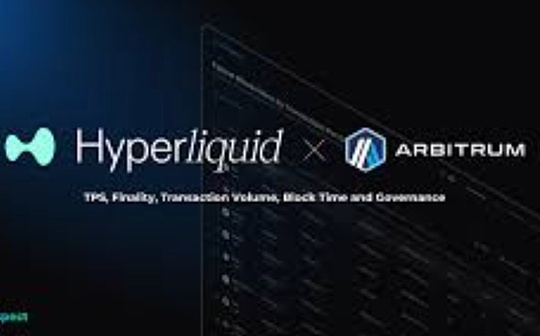
Author: Digital Finance Group Ceo James Wo, Coindesk; Compilation: Deng Tong, Bit Chain Vision Realm
SEC decided to revoke the allegations of Ethereum in June. This is a milestone that the platform is mature and obtained in the financial community.
For those who do not pay attention to this case,SEC believes that Ethereum (ETH) is sold as an unregistered stock, and he is worried that it will not follow certain rules and agreements.However, supporters of Ethereum believe that because the network is decentralized, it does not meet the standards of investment contracts or securities.
Although the SEC may decide not to take direct legal action, it does open the door for further discussion of centralization.Some technologies in Ethereum architecture have stimulated an important dialogue between influential entities around the right to contract.Although these discussions are mainly inside, solving these problems can enhance the upgrade goals of the network and support real decentralization.
When the network tries to reflect the ideal of “Ethereum 2.0”, this is especially correct. Ethereum 2.0 is a more powerful, more accessible and more practical version of its tokens and infrastructure.Some people say that it has come, while others point out that they still need to fill the gap in order to clearly announce its arrival.
Yes, Ethereum 2.0 has the huge potential of changing DEFI and a wider ecosystem, but we cannot take only half of it.To give full play to its potential, key progress is still needed.
Verifyer centralization
By transitioning to the Rights Certificate (POS) mechanism (POS) in September 2022, Ethereum is now allowed to pledge ETH, and a large number of pledge will increase verification opportunities and rewards.The upgrade clearly emphasizes the key role of Ethereum in DEFI because it has triggered countless innovative financial tools created for borrowing and transactions on the Internet.
However, the number of token ownership rather than verifications may concentrate power in smaller groups and violate the decentralized spirit of cryptocurrencies.In addition, the pledge requires 32 ETH, which means that the verificationrs with a large number of ETH pledge can have a inadequate impact on the network governance and decision -making process.This will form a feedback cycle that is conducive to some participants, and may cause power and wealth to be concentrated in the hands of a few people.
March this year,Vitalik Buterin even expressed his concerns about “lazy pledgers”, that is, those who only participated in the pledged pool instead of pledged alone -this clearly shows the correlation of centralized issues.
In essence,Ethereum represents the transformation of financial services design, access and use.However, relying on minority entities to continue to bring risks and make people question how decentralized Ethereum 2.0 is.
Turn to DEFI
Ethereum toward the centralized road lays the foundation for the more serious complex situation in the future -that is, the reduction of regulatory agencies and network elasticity.In the end, the future of Ethereum in the DEFI and the entire blockchain ecosystem depends on the balance of technological progress while limiting the centralization as possible.And there are many ways to achieve this.
If it is implemented correctly,The concepts such as Rainbow pledge can further enhance the adaptability of Ethereum and fight against centralization.In essence, the rainbow pledge allows users to pledge ETH in multiple pools and strategies at the same time, effectively creating the so -called “rewarding rainbow”.EssenceThe ETH verification process is divided into “severe” and “mild” pledge -“heavy” pledge focuses on the final determined verification service, and “mild” pledge focuses on transaction review resistance.
For example, liquid pledge protocols such as Lido or Rocket can provide heavy service pledge, and existing pledges can choose to run mild service operators.Rainbow pledge will eventually bring more efficient and more competitive networks, and at the same time, it will give liquidity pledged providers more.However, it is not easy to implement, and it may cause confusion to the entire pledge structure.
In addition to the rainbow pledge, Ethereum can also use the progress of the network scope introduced in its initial 2.0 update, such as division.Although the shards are strictly reviewed due to their security issues, it proves the rationality of turning to the second and zero -knowledge development, but this does not mean that this technology should be completely abandoned.
We have seen the evolution here, thanks to the development of “Danksharding” specifically for the second floor.Danksharding involves the proposal-builder separation (PBS), which is different from the current operating method of Ethereum verifier-fully proposed and broadcast blocks.Instead, PBS shared love and divided these tasks to multiple verifications.
In the end, Danksharding helps achieve data availability, allows verifiers to quickly and efficiently verify BLOB data and identify lack of data.
The goal is to allow users to complete the second -level transaction at the low cost as possible, and expand Ethereum to verify more than 100,000 transactions per second.This will allow DAPPs such as Uniswap to process transactions at lower costs and shorten the transaction approval time.
However,Danksharding’s highly technical infrastructure and implementation have ignored a small summary, and may encourage centralization.Therefore, although the technology has fallen out of favor, its advantages in reducing hardware and helping scalability show that the technology itself can be improved to benefit the next generation of Ethereum.Maybe Ethereum 3.0.
The major progress made by Ethereum 2.0 in the field of supervision and decentralization cannot be ignored.Reducing the network’s dependence on small group participants in order to operate and achieve legal victory is a positive step forward.However, Ethereum as the next stage of the network must include legal requirements to adapt to changing, so as to firmly establish its transformation position in DEFI and mainstream blockchain use.
Despite these obstacles, Ethereum 2.0’s current achievements have taken the ecosystem on the right path.By paying attention to the future and reiterating the commitment to decentralization, Ethereum has strong power, which can maintain its dominant position as an innovator in the blockchain field.
Organizing your affairs is only a small part of consolidating his inheritance.








